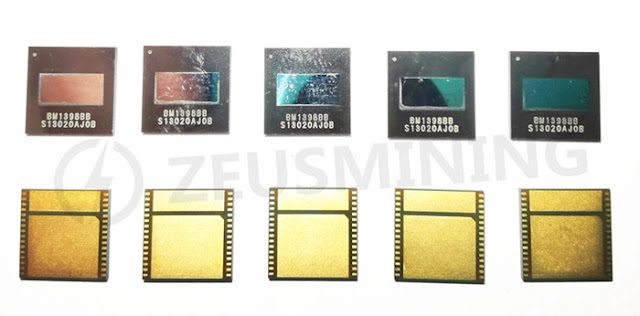ASIC Miner ICERIVER KAS KS0 Profitability In the realm of cryptocurrency mining, the Iceriver KAS KS0 miner has garnered widespread attention. Tailored specifically for the Kaspa network's KHeavyHash algorithm, it boasts high hashing power and low power consumption, making it an ideal choice for many miners. In this article, we will comprehensively assess IceRiver KS0 profitability while considering the Kaspa market conditions and the attributes of KS0 miner. Kaspa Market Dynamics Kaspa is a vibrant cryptocurrency network aimed at delivering high performance and scalability for everyday transactions. At the time of writing this article, the Kaspa coin trades at approximately $0.04959. But it's essential to note that cryptocurrency markets are highly susceptible to price volatility. Hence, investors must remain vigilant about market dynamics. Additionally, the Kaspa network's mining difficulty and reward mechanisms play a role in mining returns. Attributes of the IceRiver KS...
Antminer S19 kernel log common faults and solutions
The following faults are from the backstage kernel log of Antminer S19, and other Antminer models are for reference only.
Fault 1: lack of chips, incomplete number of chips
Solution:
1. The log shows "find 87 asic", which may be due to the lack of the No.88 chip or the damage to the No.88 chip so that you need to replace the fault BM1398 ASIC chip. Under the normal operation of the hash board, the CO signal at the output end of a certain chip is shorted, and the test fixture will report the number of the corresponding chip.
2. Use the short - circuit test "CO" signal to check: use the dichotomy method to connect the CO of the No.44 chip to the ground and press the test button of the test fixture. If the test fixture page displays ASIC=44, it means that the faulty chip is on No.45-88. Continue to test CO with a short circuit until you find the chip whose signal is interrupted. Next, find the chip whose an interrupted CO signal and check its ground value. If the resistance value is wrong, it means that the chip may be pseudo soldered or damaged. It is recommended to re-solder or replaces the faulty chip (to judge whether the resistance value is abnormal, you can compare the resistance of other chips' values).
Maintenance skills: quickly find the faulty chip through the short-circuit test point "CO"
Fault 2: screen refresh fault
A screen refresh failure means sending the same message repeatedly on the same page.
Troubleshooting method:
If there is a screen refresh failure, you need to focus on checking whether the RI and CO signal voltages of the chip are normal. Generally, start the investigation from the first field, find the BM1398 ASIC chip with abnormal voltage and replace it.
Test method: Use fluke 15B+ multimeter DC gear, red test lead to connect to the corresponding heat sink, black test lead to test. Whether the measured voltage result is abnormal can be compared with the resistance value of other chips in the same domain.



Comments
Post a Comment
Tell us your opinion